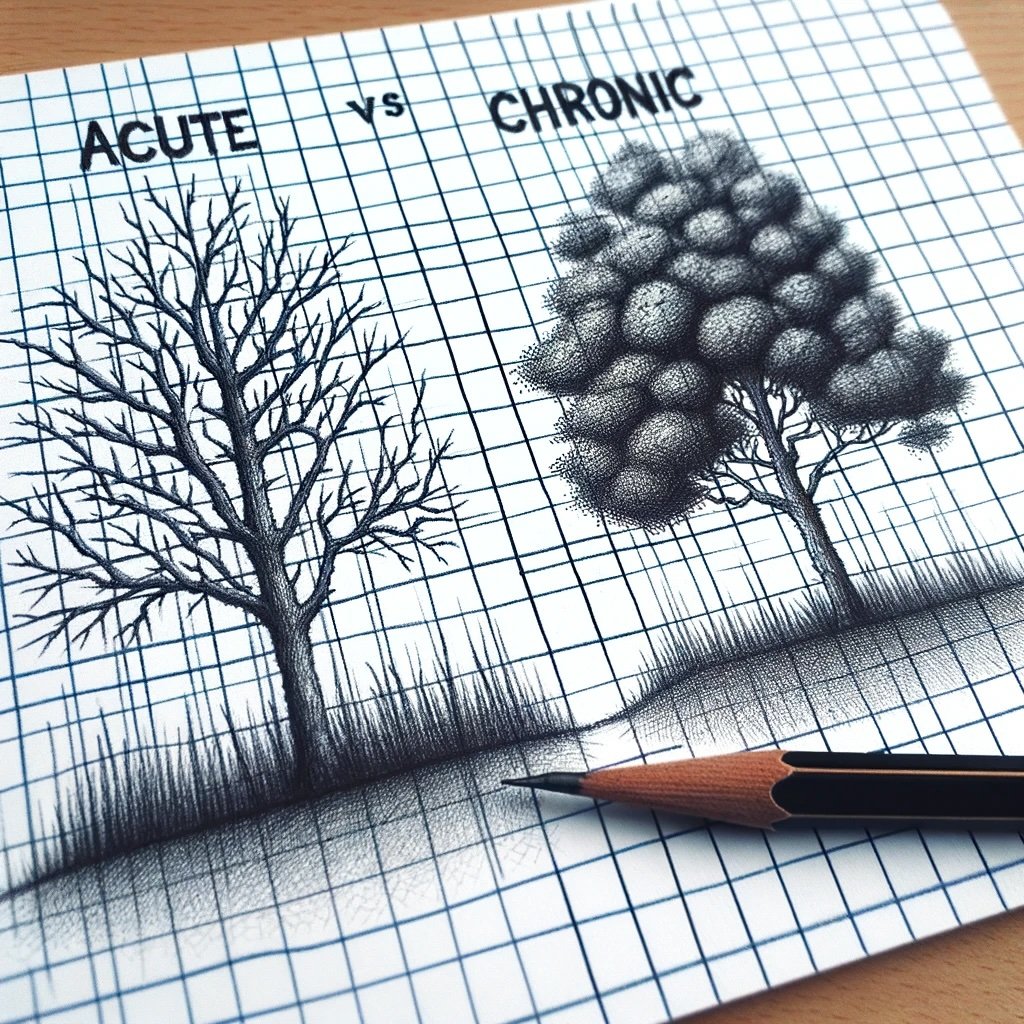Understanding Chemical and Pollution Injury in Plants: Chronic vs. Acute Injury
When evaluating the health of plants, particularly in the context of chemical and pollution injuries, it's crucial to distinguish between chronic and acute injuries. These terms refer to the duration and intensity of exposure to harmful substances, which can significantly impact the signs and symptoms observed in affected plants.
Acute Injury
Acute plant injury results from short-term, high-intensity exposure to harmful chemicals or pollutants. This type of injury often occurs suddenly and can cause severe damage or even death of the plant in a brief period.
Signs and Symptoms of Acute Injury:
Rapid Onset: Symptoms appear quickly, often within hours or days.
Severe Symptoms: Leaves and other plant parts may exhibit drastic changes like wilting, necrosis (dead tissue), or extensive leaf burn.
Localized Damage: Damage is often concentrated where the exposure was most intense.
Distinct Patterns: Symptoms often follow a specific pattern, such as damage on the plant's side facing the exposure source.
Chronic Injury
Chronic injury, on the other hand, results from long-term, low-intensity exposure to damaging agents. This type of injury develops slowly over time and may initially be less noticeable.
Signs and Symptoms of Chronic Injury:
Gradual Appearance: Symptoms develop slowly, potentially over weeks, months, or even years.
Subtle Symptoms: Early signs may include stunted growth, slight discoloration of leaves, or minor leaf drop.
Widespread Impact: Unlike acute injury, chronic damage often affects the whole plant, not just certain parts.
Cumulative Damage: Over time, the injury can lead to a significant decline in plant health, reduced vigor, and lowered reproductive capacity.
Differentiating Between the Two
Distinguishing between chronic and acute injury is essential for proper diagnosis and management. Acute injuries are often more dramatic and require immediate attention, while chronic injuries may need a long-term management strategy. Additionally, chronic injuries can indicate ongoing environmental issues that must be addressed to prevent further damage.
Understanding the difference between these types of injuries is crucial for arborists, gardeners, and environmentalists in developing effective plant healthcare strategies and advocating for better environmental practices to reduce pollution and chemical exposure.
Conclusion
In summary, while acute injuries are sudden and severe, chronic injuries develop slowly and subtly. Recognizing these differences is key to implementing appropriate interventions to mitigate damage and preserve plant health. As we strive for a healthier environment, understanding and addressing both types of injuries is vital in safeguarding our plant ecosystems.
Additional Reading
These sources provide detailed insights into how plants are affected by different environmental stressors, including air pollution and acid rain.
Texas Plant Disease Handbook - Air Pollution Injury: This source from Texas A&M University discusses air pollution injury on plants. It emphasizes that while direct damage from air pollution can be noticeable and serious, chronic injury over larger areas is often more subtle and difficult to diagnose. The mixed pollutants in the atmosphere can produce varying symptoms compared to those caused by a single compound in controlled conditions.
Citation: Texas Plant Disease Handbook. (n.d.). Air Pollution Injury. Retrieved December 2, 2023, from Texas Plant Disease Handbook.
University of Maryland Extension - Air Pollution Damage on Vegetables: This resource provides information on how different environmental conditions, such as heat, wind, and soil type, can affect the severity of plant damage caused by air pollutants like ozone, PAN, and sulfur dioxide. It details symptoms of ozone damage, including stippling and flecking on leaves, which are more severe when ozone concentrations are highest. The source also mentions that nitrogen dioxide causes similar symptoms, but the damage occurs at night, indicating the variable nature of pollution injury on plants.
Citation: University of Maryland Extension. (n.d.). Air Pollution Damage on Vegetables. Retrieved December 2, 2023, from University of Maryland Extension.
PubMed - Effects of Acid Rain on Plants: A study overviewed on PubMed discusses the direct and indirect effects of acid rain (AR) on plants. It highlights how AR affects plant performance, growth, and biomass allocations, as well as the role of soil microorganisms in mediating these effects. The study underscores the need to focus on both direct and indirect effects of AR to evaluate its impact on plant health comprehensively.
Citation: PubMed. (2023). An overview of the direct and indirect effects of acid rain on plants: Relationships among acid rain, soil, microorganisms, and plants. Retrieved December 2, 2023, from PubMed.
Growing Zone. (n.d.). Herbicide Damage in the Garden. Montana State University Extension. Retrieved December 2, 2023, from https://www.youtube.com/watch?v=KCnajfbwsSY
